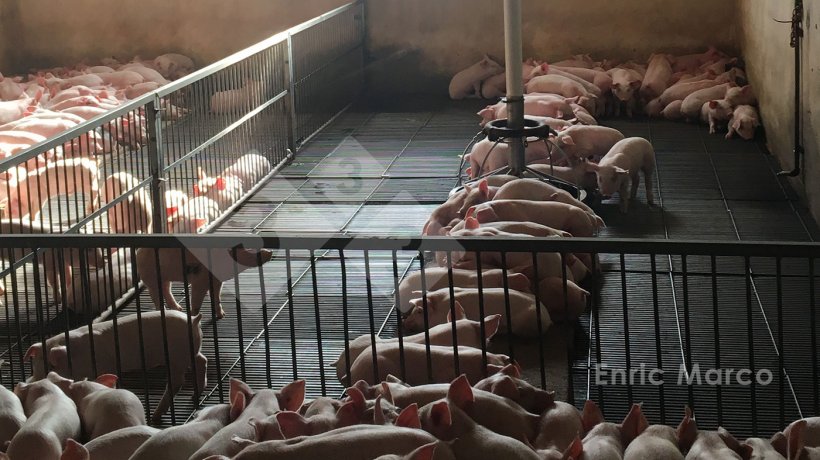This tool to troubleshoot problems with the feed conversion ratio (FCR) is designed to detect all the causes that can increase the FCR of our farm. At the end of the article you will find a flow chart that will allow you to navigate through the whole tool.
So far we have divided the causes that affect the FCR into two main groups, those that increase mortality and those that do not. In turn, we have divided those that do not increase mortality into those that do not affect average daily gain (ADG) and those that do. The causes that alter the FCR without affecting mortality but do affect ADG are the following:

Cold. As the cold becomes more intense, maximum intake will not be sufficient to compensate for the increase in basal metabolism needed to maintain body temperature and growth.

Photo 1. Cold piglets.
Heat. With the heat, all compensatory mechanisms are activated to try to maintain a constant body temperature. On the one hand, intake is reduced, since feed consumption produces heat; on the other hand, daily gain is reduced, since the simple fact of growing also produces heat. Any energy transformation produces heat.
Not enough protein or certain amino acids. An imbalance, or a deficiency of protein, will not allow maximum growth to be achieved and the remaining protein will be used as energy, but its utilization efficiency is lower (60%), so feed conversion will worsen.
Feed very low in energy. Rations that are very low in energy will prevent the maximum growth requirements from being met even if the maximum possible feed intake is achieved. Part of the protein in the feed will be destined for energy to cover the deficit, doubly affecting the feed conversion ratio.
Severe feed restriction
- Lack of feeder space
- Lack of water (especially in hot seasons)
- Elevated stocking density
- Improper pen design
- Repeated fasting periods during finishing (insufficient hopper capacity or insufficient number of fills).
- Toxins in the diet that reduce daily intake, e.g. mycotoxins.
- Feed ingredients that affect the palatability of the feed, causing a decrease in voluntary feed intake.
Lack of ventilation. Very low ventilations can lead to oxygen concentrations below those needed to maintain growth. Oxygen in the air is usually measured indirectly by measuring CO2 concentration. CO2 concentrations above 2,500 ppm can result in lower growth and higher feed conversion ratios.
Diseases. Especially diseases that have a chronic effect, that is to say, over prolonged periods of time, but without causing mortality. For example: enzootic pneumonia, atrophic rhinitis or ileitis. In subclinical cases of ileitis, growth reductions of between 9 and 42%, and reductions in the feed conversion ratio of between 6 and 42% have been described (Collins AM, 2013). In the case of enzootic pneumonia, increases in the feed conversion ratio of 0.5 points and reductions in the average daily gain of up to 157 g/day have been described (Straw B, 1989) depending on the lung lesions produced. In the case of other disease processes, such as hemorrhagic dysentery, it will be the reduction in daily feed intake (a consequence of abdominal pain) that will really affect growth and feed conversion. Porcine epidemic diarrhea in the finishing phase will affect both growth and feed conversion, especially in those cases where it occurs early; however, the disease is not characterized by mortality.
Use the flowchart to continue the investigation or to access other parts of the tool.









